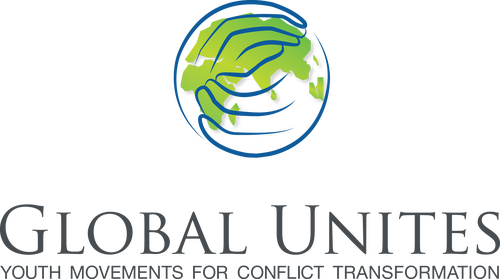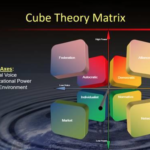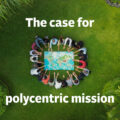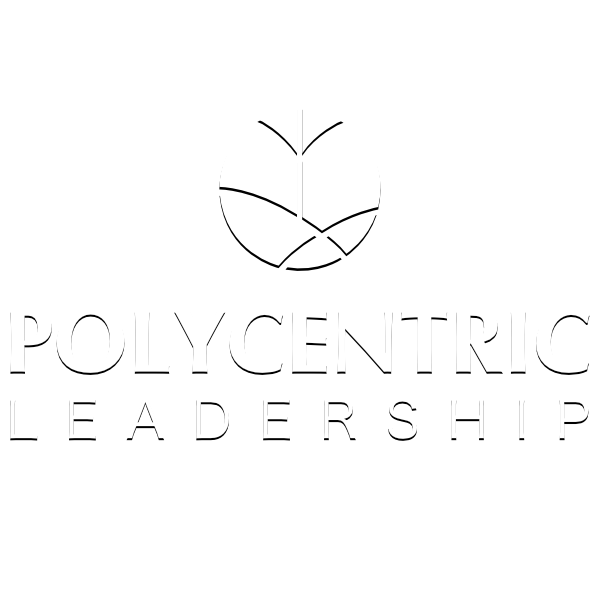By Noel Becchetti

Vision: To inspire, connect, and equip youth to transform global societies through movements that promote hope, non-violence, and reconciliation
Mission: To work alongside local leaders and transform conflict by hosting international summits, national conferences, specialized workshops, and strategic trainings to empower youth as agents of sustainable change
“The key is to recruit the right people in the first place.”
Prashan DeVisser, founder and CEO of Global Unites, began his peacemaking journey in his home country of Sri Lanka. Frustrated by their elders’ inability to peacefully end a bloody 30-year civil war, change, a new generation of Sri Lankan leaders from across ethnic and religious lines sought to pave a new path forward for justice, reconciliation, and national transformation.
Prashan, along with fellow students who represented the spectrum of ethnic, language, and faith communities in Sri Lanka, held the first National Youth Conference for Peace in 2006, bringing together 150 students, many of whom had never before met youth from other ethnic groups.
The success of their efforts led the team to formally establish themselves as Sri Lanka Unites, today the largest grassroots peacebuilding movement in Sri Lanka. In 2011, other countries marred by violent conflict reached out to Sri Lanka Unites to support them establish similar youth movements in their nations—and Global Unites (GU) was born.
Currently, GU has 10 member countries spanning four continents. They are committed to the concept of collaborative leadership.
“We work through collective conversation”, Prashan told me. “Every week, we meet with our national directors on a two-hour call. Every director has the chance to share what is going on in their country. We share ideas, best practices, new information—the goal is to build a collective body of knowledge that everyone can draw from.
“That said, we have learned that for GU to be established in a new country, it takes a spark—a charismatic leader with vision—to inspire his/ her fellow countrymen. In every country we have a seen that a bold vision to find meaningful solutions awakens many capable young leaders to join the movement. There is a thirst for national transformation; to that end, many youth are looking for a platform to engage and contribute.”
Prashan terms it as a hybrid model. “Most of the countries that are interested in GU have been battered by war and conflict. The people have been beaten down; morale is often low. It can be hard for people to visualize a better, more peaceful future. That is why it is critical for a strong leader—ideally, few strong leaders–to supply the initial momentum. It is then crucial that that leader or leaders quickly surrounds him or herself with a team represents the elements in their country—ethnic, tribal, gender, skill set, economic, perspective, and so on.”
Prashan and his senior team then come alongside these beginning teams to serve and support. “We don’t get involved. Outsiders should not initiate change–you have to support authentic local initiatives and innovations for sustainable peace.
“History has shown us how ‘leading from the outside’ peacemaking efforts have failed time and again. Rather, we let the local, in-country youth lead. We then come alongside to support.
“As we are invited to do so, we share what we have learned from experience. We know that, without a commitment to collaboration and mutual support, most movements like these have a two-year life span. They die due to three reasons: 1) They lack resources; 2) The leaders burn out; 3) They have no end game—no long-term strategy for what they hope to accomplish that includes milestones and benchmarks to enable them to track their progress.
“We come alongside, support, share, and seek to discern if GU is the right fit for these leaders, and they for us, for six months. If by that time a national director and a strong national committee have formed that share GU’s vision and mission, we will bring the national director on as staff and the country as a GU member country.”
Global Unites is a structured organization with the essential protocols. “We have 501c3 nonprofit status in the USA, with a Board of Directors,” Prashan told me. “And each member country must have a national director; a strong national committee that authentically represents a microcosm of their nation tribally, ethnically, linguistically, and culturally; a board of trustees also referred to as a council of elders, senior leaders who have worked for peace and can serve as advisors to the younger leaders.
“There is accountability within the collaborative process,” Prashan continued. “For example, GU has a goal that, by our 2024 International Summit, 5,000,000 youth worldwide will be engaged in peacemaking and 500,000 youth will become members of the movement, actively engaging for sustainable peace and development in their nations. Each country has their own goals to reach this global target.”
How are decisions made? “Our goal is always collective conversation,” Prashan said. “When a key decision needs to be discussed and decided upon, national directors are prepped ahead of time. They confer with their committees ahead of time to get their members’ perspectives. That feedback is brought into the discussion amongst the national directors and senior staff.
“If it becomes necessary, as CEO, I can make a final decision on a given matter. But we try to make the decision-making process as collective and inclusive as possible. If we don’t have consensus from the local leadership to lead a certain program or project in a certain nation, we do not move forward. Local endorsement, insight and initiative always takes priority.”
The collaborative process continues to evolve as GU grows. “We are now setting up regional connections, such as the GU East African Council, where countries in geographical proximity can address concerns specific to their region. We envision that these regional groupings will grow as GU expands.”
The bottom line, however, is finding the right people from the beginning. “We are about peacemaking,” Prashan told me. “The key to peacemaking is keeping people at the table, as long as it takes, to make real peacemaking progress. To accomplish this, you must have the right people around that table.
“You need people who share a vision for the possibility of peace and are bold in their commitment to speak on the aspirations, grievances, and injustices faced by their communities. Yet they must also be able to empathize with the pains and aspirations of the other and be willing to invest themselves in what can be an exhausting, painful, exacting process. Without those people, you are lost. With those people, there is hope.”
Author Bio
Noel Becchetti is the Vice President for Leader Development at Asian Access. Previously, he served as Executive Director for Truthseekers International, a ministry committed to spiritual and social freedom for the oppressed lower castes of India. He previously served for 13 years as President of Center for Student Missions (CSM), an urban short-term mission and service ministry working in the United States and Canada. He also enjoyed over 12 years at Youth Specialties, where he launched and directed Youthworker Journal and eventually served as Vice President, Publishing.
More Information
This case study is from an interview with Prashan DeVisser of Global Unites and is published here with permission.
Header Photo by Alin Andersen via Unsplash.










